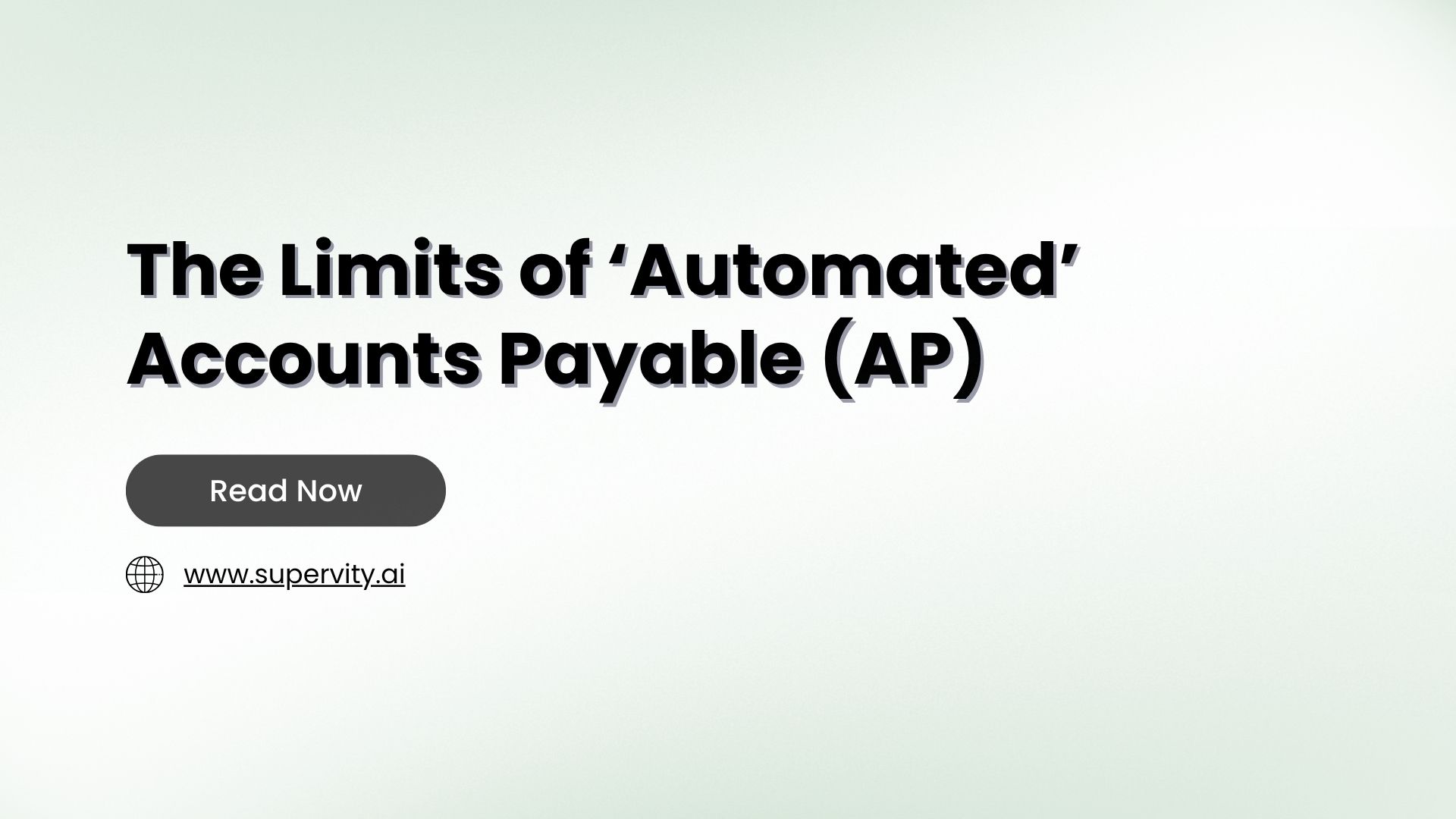
Over the last decade, automated Accounts Payable has been called “solved” more times than most finance leaders can count. OCR in AP automation promised to end manual data entry. Vendor portals for AP promised to eliminate back-and-forth emails. Bots promised to take the repetitive work off your team’s plate.
And yet, here we are.
Invoices still pile up. AP exceptions still stall. Approvals still get lost in the shuffle.
The truth is, these solutions didn’t fail, they just never went far enough. They automated tasks in isolation but left the process itself fragmented. Finance leaders still face the same bottlenecks, only now across multiple disconnected tools.
That’s why the conversation is shifting. It’s not about one more patch or add-on. It’s about what comes after automation.
At first glance, Accounts Payable inefficiency looks like small delays: an invoice missing here, a stalled approval there. But those small issues stack up into much larger costs.
This is the paradox: AP is supposed to be about precision and control. Instead, it often feels like chaos, leaving finance leaders reactive when they should be forward-looking.
Finance leaders have invested heavily in AP automation tools. But too often, these systems don’t talk to each other. One tool captures data, another routes approvals, another monitors compliance, and the finance team is left reconciling across all of them.
The result: the appearance of automated Accounts Payable, but not the reality of efficiency. Cycle times don’t shrink the way they should. Visibility doesn’t improve. AP exceptions still dominate the team’s bandwidth.
Scaling this model just adds complexity. More tools, more handoffs, more blind spots. Instead of clarity, finance leaders get yet another dashboard.
Here’s the truth: finance doesn’t need more bots or more dashboards. It needs an AP process that works like a teammate – one that never sleeps, never stalls, and never lets exceptions pile up.
Leaders want:
Because the real cost of inefficient AP isn’t just financial, it’s focus. And when finance leaders lose focus, the enterprise loses momentum.
The story of AP doesn’t have to be one of firefighting and frustration. The next step isn’t more fragmented automation — it’s something built to replace that patchwork with intelligence, orchestration, and clarity.
On 28th October, Supervity will unveil what’s next for the future of Accounts Payable. Stay tuned.